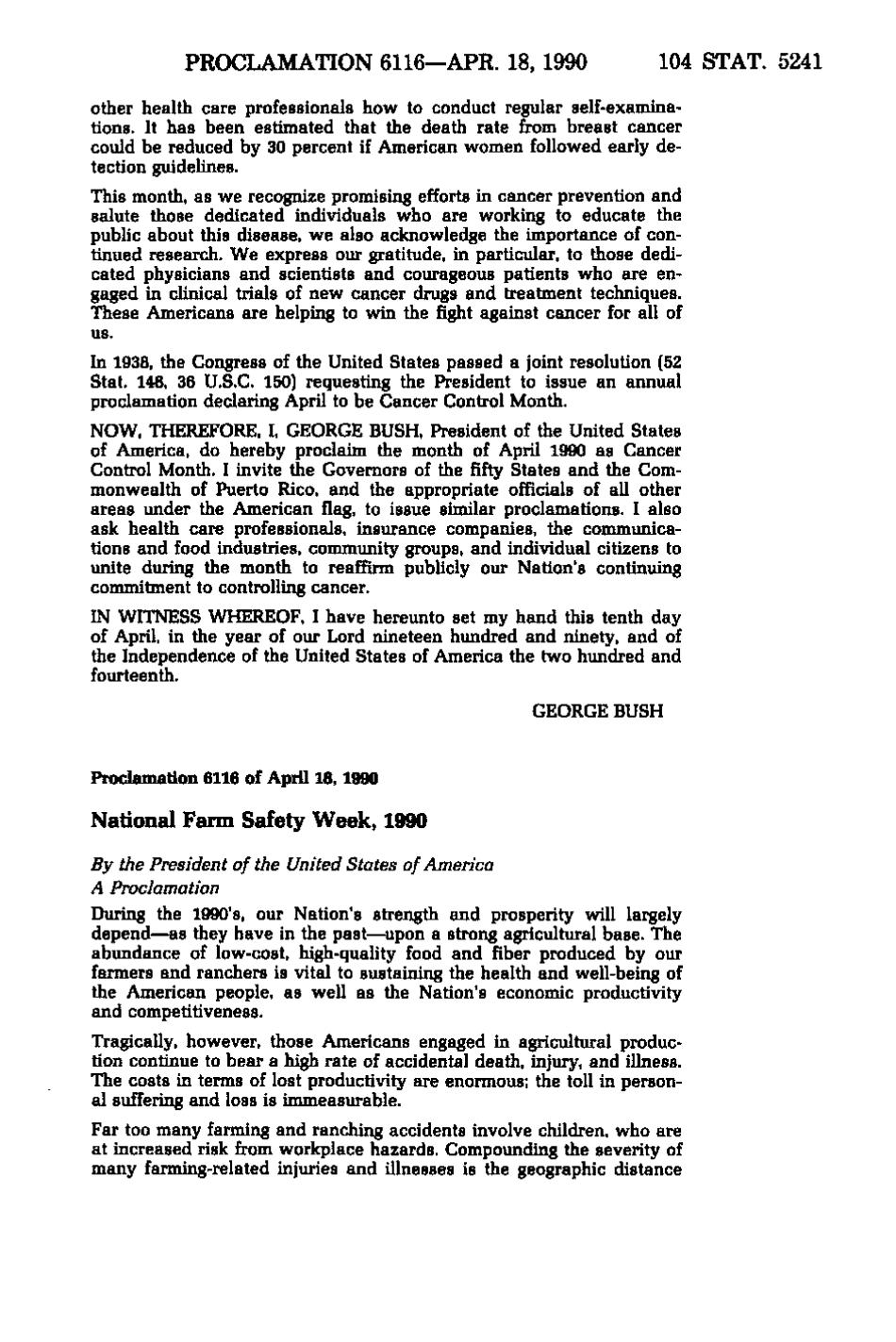PRCKJLAMATION 6116—APR. 18, 1990 104 STAT. 5241 other health care professionals how to conduct regular self-examinations. It has been estimated that the death rate from breast cancer could be reduced by 30 percent if American women followed early detection guidelines. This month, as we recognize promising efforts in cancer prevention and salute those dedicated individuals who are working to educate the public about this disease, we also acknowledge the importance of continued research. We express our gratitude, in particular, to those dedicated physicians and scientists and courageous patients who are engaged in clinical trials of new cancer drugs and treatment techniques. These Americans are helping to win the fight against cancer for all of lit. In 1938, the Congress of the United States passed a joint resolution (52 Stat. 148, 36 U.S.C. 150) requesting the President to issue an annual proclamation declaring April to be Cancer Control Month. NOW, THEREFORE, I, GEORGE BUSH, President of the United States of America, do hereby proclaim the month of April 1990 as Cancer Control Month. I invite the Governors of the fifty States and the Commonwealth of Puerto Rico, and the appropriate officials of all other areas under the American flag, to issue similar proclamations. I also ask health care professionals, insurance companies, the communications and food industries, community groups, and individual citizens to unite during the month to reaffirm publicly our Nation's continuing commitment to controlling cancer. IN WITNESS WHEREOF, I have hereunto set my hand this tenth day of April, in the year of our Lord nineteen hundred and ninety, and of the Independence of the United States of America the two hundred and fourteenth. GEORGE BUSH Proclamation 6116 of April 18, 1990 National Farm Safety Week, 1990 By the President of the United States of America A Proclamation During the 1990's, our Nation's strength and prosperity will largely depend—as they have in the past—upon a strong agricultural base. The abundance of low-cost, high-quality food and fiber produced by our farmers and ranchers is vital to sustaining the health and well-being of the American people, as well as the Nation's economic productivity and competitiveness. Tragically, however, those Americans engaged in agricultural production continue to bear a high rate of accidental death, injury, and illness. The costs in terms of lost productivity are enormous; the toll in personal suffering and loss is immeasurable. Far too many farming and ranching accidents involve children, who are at increased risk from workplace hazards. Compounding the severity of many farming-related injuries and illnesses is the geographic distance
�
